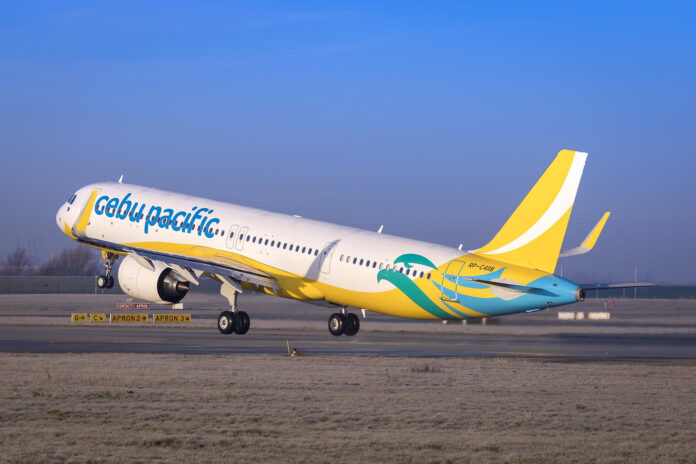-
Cebu Pacific suffers 4.3% higher net loss in Q1 to P7.61 billion
-
Revenue surged 147.6% due to a jump in passenger volume, cargo services, and flight activities as COVID-19 restrictions began to ease in March
-
Cargo operations grew 36% to34.2 million kilograms
-
The airline’s P32.8 billion capex budget this year is mainly for fleet replacement
Low-cost carrier Cebu Pacific suffered a 4.3% higher net loss of P7.61 billion in the first quarter of 2022 from the P7.298 billion net loss sustained in the same period last year.
The airline in a statement said it faced headwinds in January and February. A wave of COVID-19 infections triggered by the Omicron variant led to stricter travel regulations and limited operating capacity due to crew resource limitations, which resulted in several flight cancellations.
The easing of travel restrictions from March, on the other hand, boosted passenger volume, cargo services, and flights, and consequently revenue.
The group incurred operating expenses of P12.05 billion in the first quarter, 26.4% more than the P9.53 billion for the same period last year. This was mostly due to the ramp-up of operations when COVID-19 restrictions eased.
Operating loss, on the other hand, narrowed 22% to P5.34 billion in the first quarter from P6.82 billion year-on-year.
Revenue surged 147.6% in the first three months of the year to P6.71 billion from P2.71 billion in the same period last year, Cebu Pacific parent company Cebu Air Inc. said in a regulatory disclosure.
In the first quarter of 2022, Cebu Pacific deployed 16,521 flights, 128% more than last year.
Passenger revenue soared 256.2% to P3.16 billion from P887.45 million. Cebu Pacific attributed this to a 272.4% jump in passenger volume from 0.6 million to 2 million, brought about by a 128.3% spike in the number of flights, along with a 16.7-percentage point increase in seat load factor from 53.2% to 69.9%.
A slight 4.3% decrease in average fares was offset by higher passenger revenues.
Cargo operation sustained its growth, jumping 36% to 34.2 million kilograms from last year.
Cargo revenue rose 39.9% to P1.85 billion from P1.32 billion, primarily driven by higher yield from chartered cargo services.
Revenue from ancillary services soared 239% to P1.7 billion from P501.74 million largely due to higher passenger volume and more flights activity during the period.
For the rest of 2022, Cebu Pacific has a better business outlook driven by domestic recovery and the re-opening of international destinations. It remains cautious of risks presented by rising jet fuel prices and interest rates and depreciation of the Philippine peso against the US dollar.
For this year, the airline has a capital expenditure budget of P32.8 billion, mainly for fleet replacement.
Cebu Pacific chief executive officer Lance Gokongwei, during the company’s annual stockholders’ meeting, said the airline will take delivery of seven Airbus NEO (new engine option) aircraft this year, replacing eight Airbus CEOs (current engine option).
Last year, it took delivery of six new aircraft – including five Airbus NEOs – which replaced six CEOs.
Gokongwei said over the next five years, Cebu Pacific will have 48 deliveries and 35 aircraft exits. In 2026, with 87 aircraft, of which 63 will be NEOs and 16 will be ATR turboprops, “this replacement-strategy fleet will keep us ahead in fuel efficiency and maintain the lowest cost per seat kilometer flown,” Gokongwei said.





